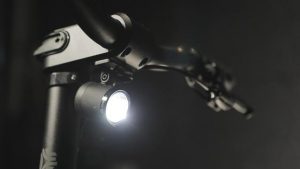The team takes a 3D scan of the car and uses professional CAD (computer-aided design) software Solidworks to model each part and figure out where it should sit in the car. “Sometimes we end up just a little bit heavier than [the car] used to be, but with that weight evenly distributed between the front and rear axle, we’re approximately respecting its original weight distribution,” Hilton explained. Lunaz’s XK120 will be faster than the original; however, respecting the old weight distribution should give it broadly similar handling and that nebulous driving ‘feel’ on the road.
The Rolls-Royce Phantom V is a four-door limousine that was used by, among other high-profile owners, Queen Elizabeth II and the Queen Mother as an official state car. The Jaguar XK120, meanwhile, is a two-seater roadster designed for speed. These wildly different characteristics pose unique challenges and make each model “an entirely bespoke build,” according to James Warren, director of communications at Lunaz.
But the company is trying to be efficient with its design and manufacturing pipeline. It’s created a modular set of powertrain components, for instance, for use in the Phantom V, XK120 and future converted vehicles. Lunaz is also building its own battery packs in a way that can scale to different cars. “We haven’t got the choice to modify the car to fit the battery,” Hilton said. “We have to modify the battery to fit the car. So we started off with the assumption that [the battery packs] have to be ours.”
Lunaz isn’t a large business and doesn’t, therefore, have plans for a mass-market EV “platform” like VW. But it does want a technical foundation to apply to all of its cars and minimize future testing. “It’s less of a cost thing in the way that mass [car manufacturers] are going about it,” Warren said. “It’s more about finding efficiencies in the build process.”
Before starting Lunaz, Lorenz looked at other startups known for electric conversions. He noticed that many were simply grabbing parts from wrecked Teslas and throwing them into classic cars. “They didn’t have a good understanding of the products they were dealing with,” Lorenz said. “And they were dealing with [a] high voltage [vehicle], so it just seemed like quite a dangerous build to me.”
Lunaz is taking a different approach. According to Hilton, the company is following UNECE Regulation 100, safety requirements for electric powertrains set by the United Nations. When the car turns on, it takes 192 voltage measurements and checks the temperature at 96 points across the battery packs. There are smaller safety details, too. You can’t drive the car with the charger plugged in, and if you press the brake and throttle at the same time, you’ll only get the brakes, rather than a potentially dangerous mix of the two.
Some of these features might sound basic, but they’re not guaranteed by many companies making electrified classic cars. “Unless you’re being really silly, you won’t be able to damage it,” Hilton said. “It will turn itself off before it gets to a place where you could do it any harm. All of that stuff takes a lot of time to develop, but it’s necessary to build a product that’s suitable for putting out into the hands of the general public.”
“Unless you’re being really silly, you won’t be able to damage it.”
Performance and safety is only one half of the equation. To fulfil its mission of a modern-but-classic car manufacturer, Lunaz has become a luxury interior specialist, too. For Lorenz, that means subtle upgrades that aren’t immediately noticeable if you peer in through the driver-side window. In the XK120, for instance, Lunaz converted the fuel gauge and rev counters into battery and power meters. The walnut-veneer dashboard now has a touchscreen that supports satellite navigation, music streaming and phone connectivity over Bluetooth.
The insides of the doors, meanwhile, have pockets for gadgets — think smartphones, tablets and other everyday carry items — made from woven leather and other materials prevalent in the early 1950s. “When you get into one of our cars, if it’s from 1953, it feels like you’re in a car from 1953,” Lorenz promised.




